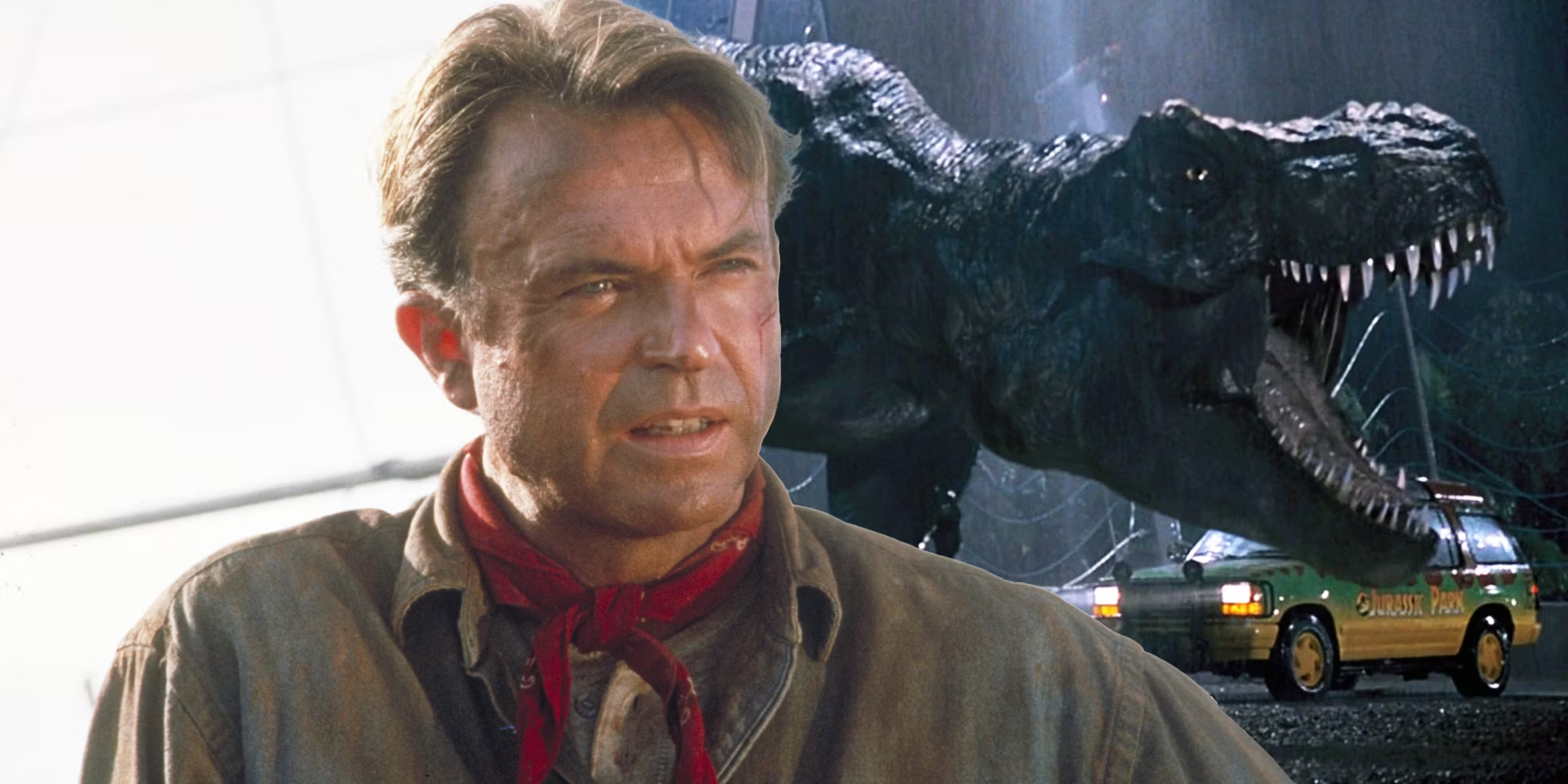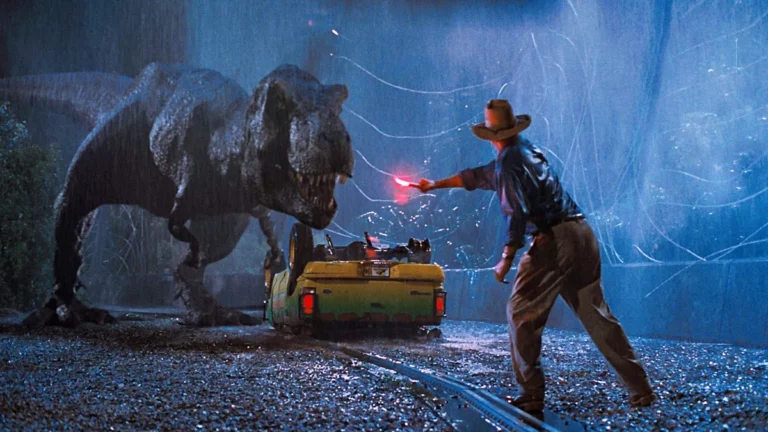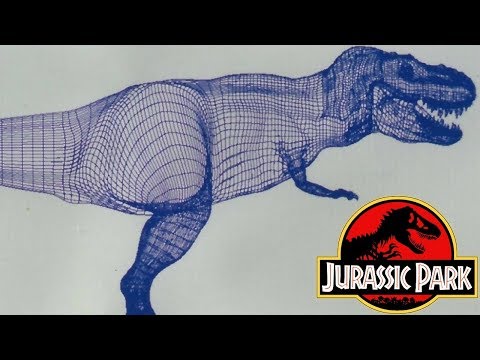When Steven Spielberg’s Jurassic Park roared onto screens in 1993, it didn’t just introduce audiences to a prehistoric playground; it set a new benchmark for visual effects in cinema, influencing a host of filmmakers and birthing several mega-franchises in the process. This film, which grossed over $1 billion against a modest budget of $63 million, became a cornerstone of modern blockbuster filmmaking, paving the way for technology-driven narratives in cinema.

How Jurassic Park Reshaped Cinema
Jurassic Park wasn’t merely a film about dinosaurs; it was a visionary piece that seamlessly blended storytelling with cutting-edge technology. This amalgamation inspired filmmakers like George Lucas, Peter Jackson, and James Cameron to embark on their ambitious projects, which would later dominate the box office and captivate global audiences.
George Lucas and the Star Wars Prequels
George Lucas, who had previously revolutionized sci-fi cinema with his original Star Wars trilogy, found new inspiration in Jurassic Park’s technological advancements. After concluding his Indiana Jones trilogy in 1989, Lucas returned to the Star Wars universe, driven by the possibilities that new visual effects offered.
“My decision to make Episode I was more or less driven by technology,” Lucas explained, according to TheThings. He noted that the original Star Wars films were constrained by budget and technology, which wasn’t the case by the time the prequels were conceptualized.
This shift resulted in the Star Wars prequels grossing over $1.1 billion, reaffirming Lucas’s legacy in utilizing technology to enhance cinematic storytelling.

James Cameron’s Visionary Avatar
Similarly, James Cameron’s Avatar, released in 2009, followed the footsteps of Jurassic Park by pushing the boundaries of what visual effects could achieve. The film, which showcased stunning visuals of an alien world, not only grossed $2.9 billion but also utilized sound effects from Jurassic Park, illustrating the deep-rooted influence Spielberg’s film had on Cameron’s work. Avatar’s success underscored the critical role of technology in crafting immersive worlds that resonate with viewers across the globe.
Peter Jackson’s Middle-Earth Saga
Peter Jackson’s decision to adapt J.R.R. Tolkien’s The Lord of the Rings into a film trilogy was significantly bolstered by the technological strides made by Jurassic Park. Convinced that a faithful and compelling depiction of Tolkien’s universe was possible, Jackson embarked on what would become one of the most successful film trilogies of all time, amassing over $2.9 billion worldwide. The success of these films not only proved that epic fantasies could be realized on screen but also that they could do so with the critical acclaim and financial success previously seen only in more conventional genres.

The Legacy of Jurassic Park
Steven Spielberg’s Jurassic Park was more than just a film; it was a phenomenon that reshaped the landscape of global cinema. By demonstrating the potential of visual effects, it inspired a generation of filmmakers to dream bigger and harness technology to tell stories in ways that were previously thought impossible. The film’s influence is evident in the billion-dollar franchises it helped inspire, each of which owes a part of its success to the groundbreaking work showcased in this 1993 masterpiece.
As we look back, it’s clear that Jurassic Park was not just about bringing dinosaurs back to life; it was about setting the stage for a new era of cinematic innovation. This legacy, marked by technological advancement and creative storytelling, continues to influence filmmakers and captivate audiences around the world, proving that sometimes, the ripple effects of a groundbreaking film can be just as powerful as the T-Rex’s roar.

